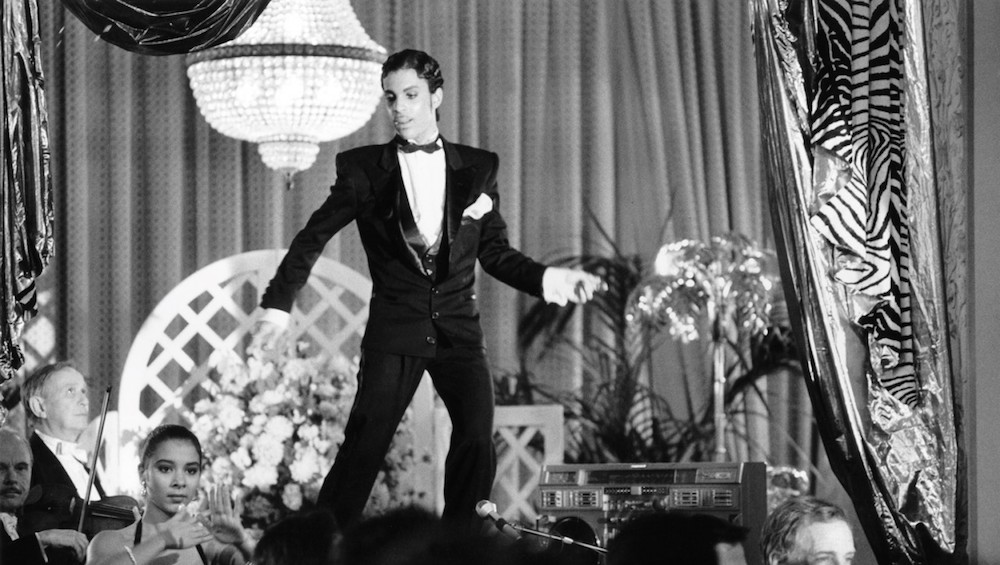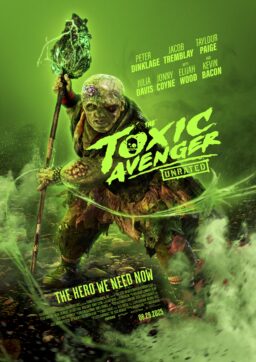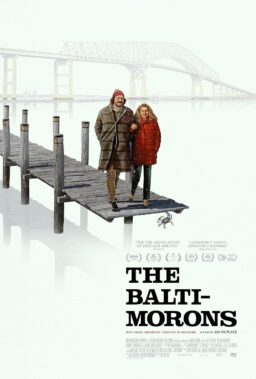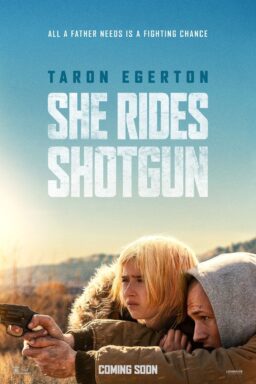In the wake of the shocking death of musical icon Prince last month, his landmark 1984 film debut “Purple Rain” reappeared in movie theaters across the country. Like many of his fans, I took a couple of hours to watch it on the big screen, where it belongs. (In all honesty, I also went because I was seeing “Mother’s Day” later that day, figured that seeing it might help towards evening out my psychic scales.) Watching it again, I’m still convinced that it is either one of the best terrible movies ever made or one of the worst great movies of all time. In many ways, it is kind of an awful film that takes a narrative that might have seemed thin for a later Elvis Presley vehicle and added dime-store psychology and an attitude towards women that even back then was retrograde at best (including such infamous moments as a woman being tossed into a trash dumpster for a laugh and the bit in which Apollonia Kotero is told to purify herself in the waters of Lake Minnetonka); it’s borderline disturbed at worst. At the same time, “Purple Rain” was made with a great style and energy. And unlike many rock stars who tried to make the transition to the big screen (only to find that whatever charisma they displayed on stage in front of thousands of screaming fans did not translate to standing before a movie camera), Prince himself turned out to be a mesmerizing screen presence, even when he was just standing there, performing the songs from the spectacular soundtrack.
There is some great stuff in “Purple Rain,” of course, and in the annals of rock movie history, it deserves its place of prominence. But it’s most significant legacy of the film, at least from a cinematic standpoint, it is that film’s massive success ensured that Prince, if he so desired, could do basically anything he wanted, no matter how outlandish, for a follow-up and he could get it financed by people hoping that he would give them “Purple Rain 2”—either literally or metaphorically. Of course, as anyone who was following Prince even back then, he was never one for repeating himself or doing the expected. Taking advantage of the power he possessed at this time in Hollywood, he used it to produce and make his directorial debut with “Under the Cherry Moon” (1986), one of the strangest and craziest movies of its time. It’s a film so utterly defiant of what one might have rightfully expected from a Prince vehicle that even his loyal fans stayed away in droves and it immediately went down in the annals of screen history as a disaster that more or less killed Prince’s viability as a screen icon. The hell of it is that once one gets past the fact that it does not resemble “Purple Rain 2” in even the slightest, it reveals itself to be an offbeat gem that may one day go down as the MTV era equivalent of Marcel L’Herbier’s infamous 1924 silent epic “L’inhumaine”—an unabashed vanity project that both revels in and transcends its solipsistic underpinnings in ways that are alternately perplexing and endearing, an endeavor further bolstered by a stunning visual style and a central performance that, for better or worse, you cannot take your eyes off of for a second, not that you ever have a chance to do so.

In “Under the Cherry Moon,,” Prince and fellow “Purple Rain” refugee Jerome Benton play Christopher Tracy and Tricky, a pair of friends from Miami who have relocated to the French Riviera and earn their living as gigolos insinuating themselves into the bedrooms and pocketbooks of the countless rich women they come across. One day, the newspapers announce the imminent arrival of Mary Sharon (Kristin Scott Thomas, in her screen debut), a long woman with serious daddy issues about her often-absent billionaire father (and considering that her father is played by the always-terrifying Steven Berkoff, can you blame her?) and a $50 million dollar trust fund that she has just come into. This is the proverbial big fish that the Christopher and Tricky have been waiting for—the one where the ultimate prize is matrimony—and they both set off to win both her heart and her millions.
However, Mary is not quite as naïve as some might think, and fails to fall for their usual business at first. Eventually, Christopher’s bizarre seduction techniques (which have to be seen to be believed) win her over and she falls in love with him. Unexpectedly, Christopher finds himself falling in love with her as well and not just because of the money, a development that does not sit well with Tricky and leads to the inevitable scene in which he says exactly the wrong things at exactly the wrong time with exactly the wrong people present. To further complicate matters, Mary’s father arrives, gets a load of the situation and is determined to get Christopher out of the picture once and for all and if a payoff does not work, he is more than willing to go to more extreme measures to get the task done. Oh yeah—while a number of Prince songs (including the smash hit “Kiss”) can be intermittently heard on the soundtrack and Christopher does work as a piano player, he doesn’t actually perform a song on-screen until nearly the halfway point when he kicks in with an ecstatic rendition of “Girls and Boys.” After that, his only other on-screen performance comes during the end credits when (Spoiler Alert!) he reunites with the Revolution in Heaven to jam out on “Mountains.”
Man, that must have been one hell of a pitch meeting.
If one applies normal critical standard to “Under the Cherry Moon,” it could easily be dismissed as little more than a vanity project gone horribly wrong. The screenplay by Becky Johnston, who would go on to write the scripts for “The Prince of Tides” and “Seven Years in Tibet,” plods along aimlessly and is laden with clichés so hoary that they seem to have been excavated from a museum. The performances are all over the place, ranging from the barely-there underacting by Kristin Scott Thomas (who was a replacement for Prince’s then-girlfriend Susannah Melvin, originally cast in the part—a rumor that Madonna was considered for the part as sends the mind reeling) to the scenery-chewing histrionics of Berkoff (who was also a replacement when the originally cast Terrence Stamp quit early in the production). The romantic chemistry between the two leads is practically nonexistent, which works in the early scenes when Mary is keeping Christopher at arms length, but not so much in the later scenes when they are supposed to be in love. Frankly, there is more genuine chemistry between Christopher and his cohort Tricky throughout, which adds an intriguing layer to the proceedings (and there is the insinuation that they have engaged in threesomes with their sexy landlord in order to beat paying the rent), it has the effect of making Mary seem like the beard than the object of desire.
And yet, if you can get past those flaws—and I admit that may be a chore for some—“Under the Cherry Moon” proves to be an utterly fascinating film thanks to the multiple contributions on both sides of the camera by Prince. As he demonstrated in “Purple Rain,” he is not a good actor in the conventional sense, but as a screen presence, he is undeniably captivating. Unlike a lot of music stars, he is able to rethink his mystique into cinematic terms in ways that are strangely compelling.
The difference here is that this time around, he gets a chance to show off a sly sense of humor that was largely absent in the generally self-serious “Purple Rain.” Throughout the film, he demonstrates crack comic timing that manifests itself in everything from his wild way with dialogue (as soon as you hear it, you will be imitating his unique method of saying “Garçon!”) to his cheerful willingness to engage in overt mugging for the camera, which somehow fits his character perfectly. Even better are the scenes featuring him and Jerome Benton (who stole scenes in “Purple Rain” as Morris Day’s aide-de-camp), in which the two go at it like a classic comedy duo romping through some of their most beloved bits—in some alternate version of Hollywood, Prince and Benton continued the act and went on to become the modern-day Martin & Lewis in a series of classic comedies. (If you doubt this, then go to YouTube and look up the phrase “wrecka stow” and prepare to be delighted.)

As a director, Prince (who took over the reins from Mary Lambert early in the production) proved to be just as fascinating behind the camera as in front of it. Yes, there are the kind of clumsily-staged and oddly-paced scenes that are the hallmarks of most first-time filmmakers, but the film as a whole is so ambitious that those hiccups can easily be ignored. At a time when most filmmakers were trying to approximate the look and style of music video, Prince, in conjunction with German-born cinematographer Michael Ballhaus (just beginning a Hollywood career that would see him shot such films as “Broadcast News,” “Bram Stoker’s Dracula” and a number of Martin Scorsese classics including “The Last Temptation of Christ,” “Goodfellas” and “The Departed”) and legendary production designer Richard Sylbert, created a film that, while set in the present day, was a deliberate evocation of old-time Hollywood glamour that also served as an ideal demonstration of the eternal glories of black-and-white filmmaking.
However, the throwback visuals are more than just a stylistic ploy. By taking a film that looks and feels as if Fred Astaire and Ginger Rogers will be popping up for a musical number and then placing someone like Prince—a creature who would never have been admitted into the star pantheon of that era for any number of reasons—in the middle of it all, it offers up a subtextual tension that plays nicely with the more overt conflict between the outside Christopher and the closed world of money and privilege in which Mary resides, even if she herself does not completely embody it.
The music was perversely released on vinyl with the title “Parade” rather than the name of the film it was featured in. The blend of funk, rock and dance sounds mixed together with both American and European sensibilities was underrated at the time (although a hit by any normal standards, “Parade” did not come close to the sales of “Purple Rain,’” and the electrifying “Kiss” was the only big single off of it) but it plays beautifully today. Oddly, the music was de-emphasized in the film—Thomas gets to perform an on-screen musical number before Prince does—and it is only when you listen to the full album that you can fully realize how strong the songs are. (This is most evident with “Sometimes It Snows In April,” which in the film underscores one of the most awkward moments but comes to full emotional life when heard on its own.) The lack of full-scale musical numbers is especially strange when you consider that this is a movie practically begging to burst out into full-scale production numbers throughout. Like the film, the soundtrack is a strange and lovely meditation of life, love and death that is shot through with a lot of humor and which finds Prince pursuing his own distinct personal vision, no matter what the possible commercial repercussions might have been.
As it turned out, those repercussions would prove to be somewhat severe because when “Under the Cherry Moon” premiered, it was largely lambasted by critics (though a few critics, including J. Hoberman, were brave enough to defend it); when audiences discovered that it was a Prince film that was in black-and-white, that he didn’t sing much and that wasn’t “Purple Rain 2,” they stayed away. To be fair, even if the film had been a more conventional outing, there is a good chance that it still would have failed, as while “Purple Rain” was released at a time when the Hollywood/MTV crossover was at its zenith, this one happened to come at a time when the marketplace was glutted with films starring rock stars who were being rejected by even their most ardent fans—it came out a couple of weeks after David Bowie turned up in the Jim Henson fantasy “Labyrinth” and a few weeks before the infamous Madonna bomb “Shanghai Surprise.”
After its failure, Prince seemed to lose interest in the filmmaking process, possibly because he found it difficult to reconcile his one-man-band approach to creating music with the filmmaking process in which hundreds of pairs of hands are required to create even the most singular of visions. In 1987, he directed “Sign ‘O’ the Times,” a concert film tying in with the double album of the same name that caught him at one of his peaks as a live performer but which remains frustratingly unavailable, at least in America. In 1990, he finally gave everyone the “Purple Rain” sequel they had been clamoring for, but the result, “Graffiti Bridge” (1990), was so silly—though it did contain a killer soundtrack that alone makes it worth watching at least once—that it seemed as if he was trying to kill off his movie career for good. If that was the case, mission accomplished because unless he has a surprise or two in his fabled vault, he never directed a feature film again, though he would do the occasional soundtrack work, most famously for the first “Batman” movie, and turned in a memorable, though admittedly head-scratching, appearance on the sitcom “New Girl.”
Even though I consider it to be the better film, I know that “Under the Cherry Moon” will never threaten “Purple Rain”s placement in the pop culture firmament. And yet, if “Purple Rain” is the “Citizen Kane” of Prince movies—the instant classic that will always be celebrated—then “Under the Cherry Moon” is the “Touch of Evil”—a far more disreputable film that is so delightfully deranged that you stare at it in amazement that such a thing could have possibly emerged from a Hollywood studio. It plays better now than it did when it came out. With Prince’s untimely death sending both ardent fans and newcomers to his vast and fascinating oeuvre, hopefully some will take a chance and give it another shot and discover for themselves just how good it really is. Maybe some brave soul will even go so far as to book it as a midnight show so that fans can come together at last to see what they missed out on 30 years earlier. Either way, they will come out of it amused, dazzled and with an immediate desire to purchase the soundtrack if they do not already have it. If you do watch it, make sure that you have a wrecka stow handy.












